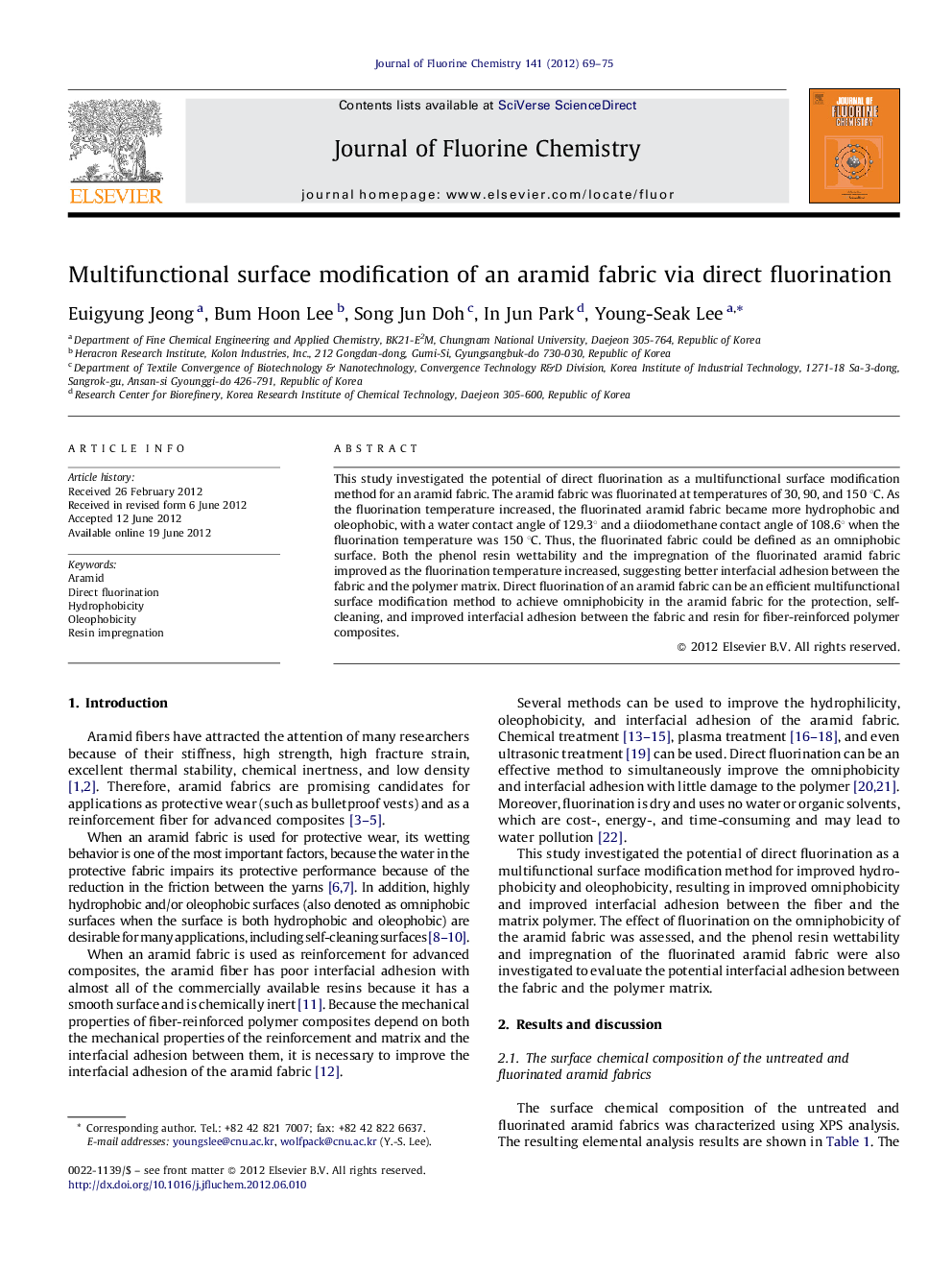| Article ID | Journal | Published Year | Pages | File Type |
|---|---|---|---|---|
| 1314046 | Journal of Fluorine Chemistry | 2012 | 7 Pages |
This study investigated the potential of direct fluorination as a multifunctional surface modification method for an aramid fabric. The aramid fabric was fluorinated at temperatures of 30, 90, and 150 °C. As the fluorination temperature increased, the fluorinated aramid fabric became more hydrophobic and oleophobic, with a water contact angle of 129.3° and a diiodomethane contact angle of 108.6° when the fluorination temperature was 150 °C. Thus, the fluorinated fabric could be defined as an omniphobic surface. Both the phenol resin wettability and the impregnation of the fluorinated aramid fabric improved as the fluorination temperature increased, suggesting better interfacial adhesion between the fabric and the polymer matrix. Direct fluorination of an aramid fabric can be an efficient multifunctional surface modification method to achieve omniphobicity in the aramid fabric for the protection, self-cleaning, and improved interfacial adhesion between the fabric and resin for fiber-reinforced polymer composites.
Graphical abstractDirect fluorination of the aramid fabric achieved a highly hydrophobic and oleophobic surface and improved phenol resin impregnation, demonstrating the benefits of the fluorination as a multifunctional surface modification method.Figure optionsDownload full-size imageDownload as PowerPoint slideHighlights► Direct fluorination of the aramid fabric improved hydrophobicity and oleophobicity. ► Direct fluorination of the aramid fabric improved phenol resin wettability and impregnation. ► These improvements suggest that direct fluorination of the aramid fabric can be an efficient multifunctional surface modification method.
